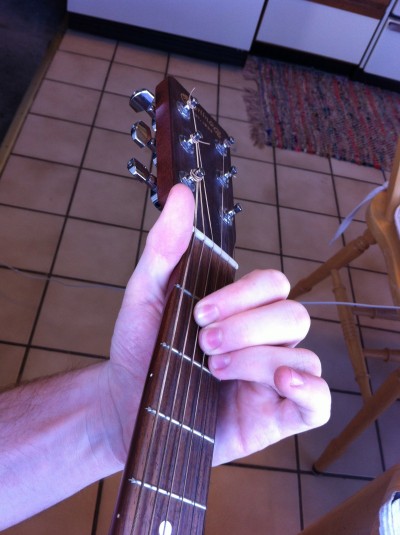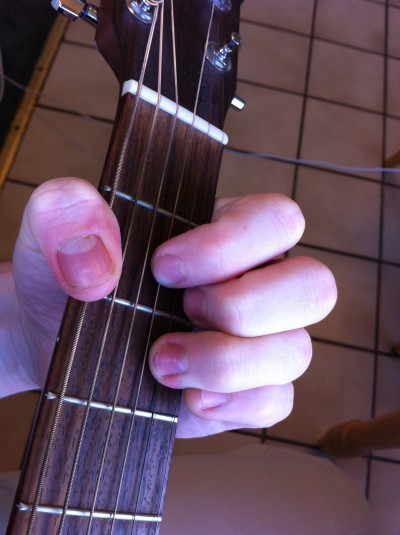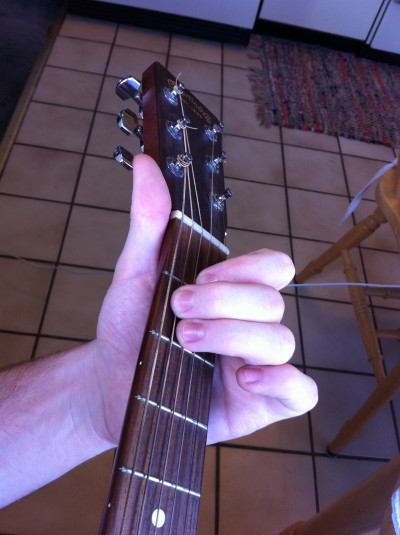To start off our day of guitar chords, here are three very commonly used open chords that are very often played together. A, D, and E are three chords you will see appearing together over and over again, especially in blues, folk, rock, country, pop, and other genres in the key of A major.
If these open chords are new to you, a great place to start is to just work on one chord at a time, starting with A major, and making sure it sounds good when you strum the strings. Once you can do that, work on getting the next chord, D, to sound good. Finally, do the same for E. When working on individual chords, it can also be beneficial to try playing one of the chords correctly, then once you get it down, taking your fingers off the fretboard and putting them back on to make the same chord, and repeating this a few times, to really get the feel for that chord shape.
Once you are somewhat comfortable with the chords themselves, you can start practicing the transitions between them. I’d recommend first just going from A to D and back, several times very slowly.
You’re actually practicing two transitions here (A to D and D to A) that will get used over and over and over again in your musical journey. Once those are comfortable, move onto the next pair (D to E and E to D). Finally, work on the last pair (E to A and A to E).
For now there’s no need to worry about playing with a metronome, since we’re just getting the foundational shapes and movements between these chords down. We’ll work on rhythm itself later.
These three chords sound great together in any order, so feel free to experiment with different combinations!
One time for forming these chords and switching between them more easily is to “lead” with a certain finger. In other words, try forming each chord starting with one finger that frets first, and letting the other fingers follow suit.
The second video shows this same chord progression, but slower, so you can see how my fingers arrive at slightly different rates. One finger tends to “lead” the others when forming the chords.



